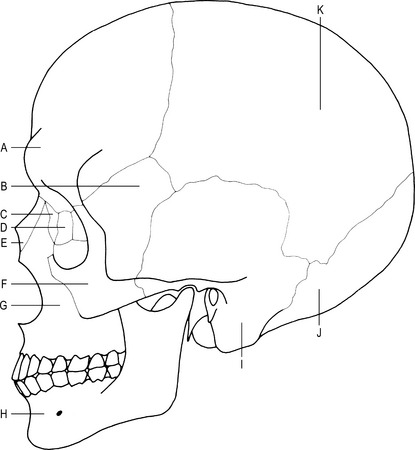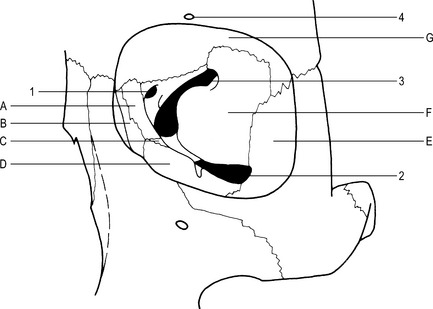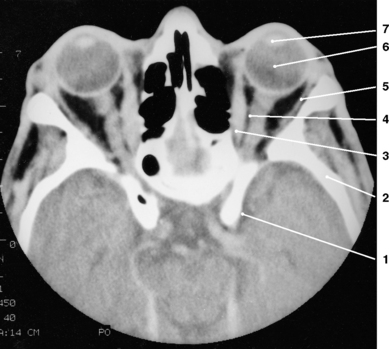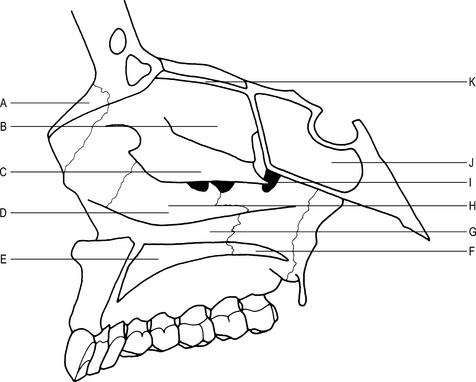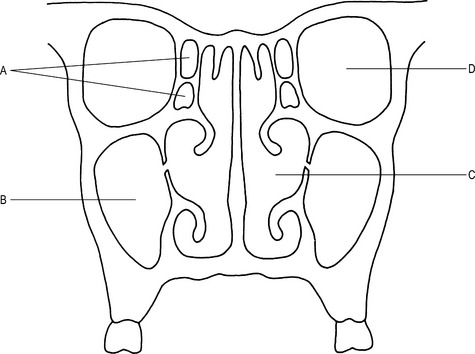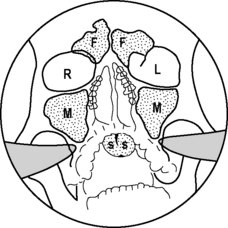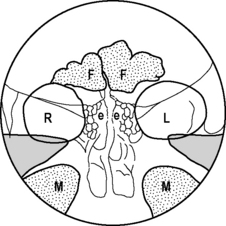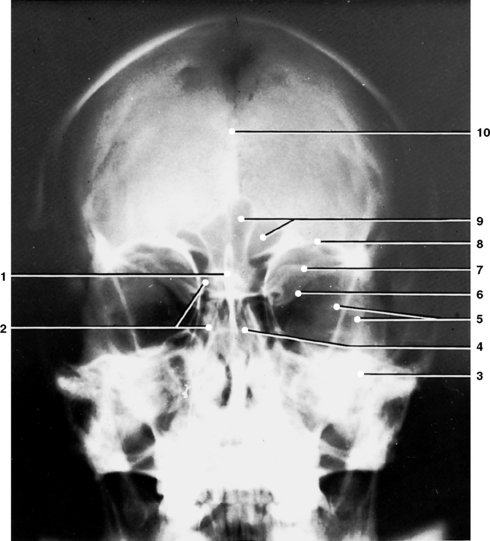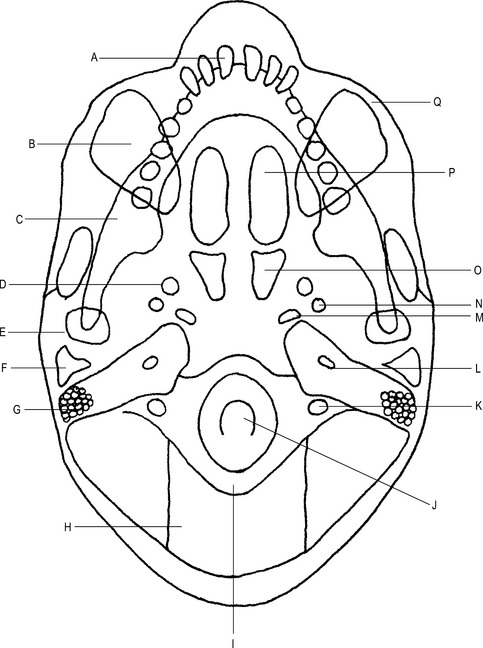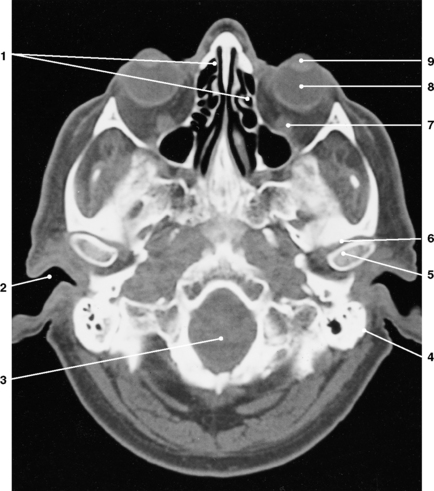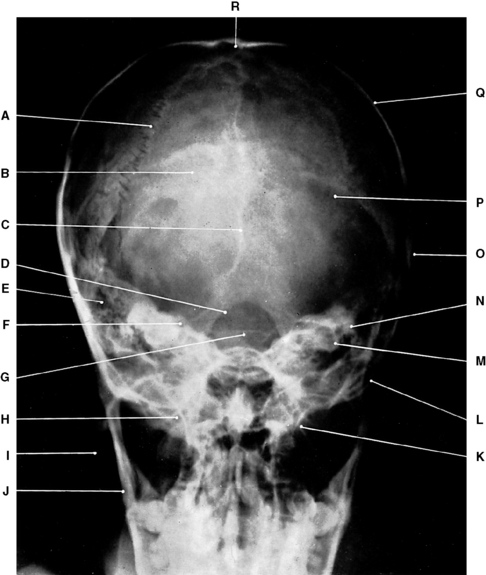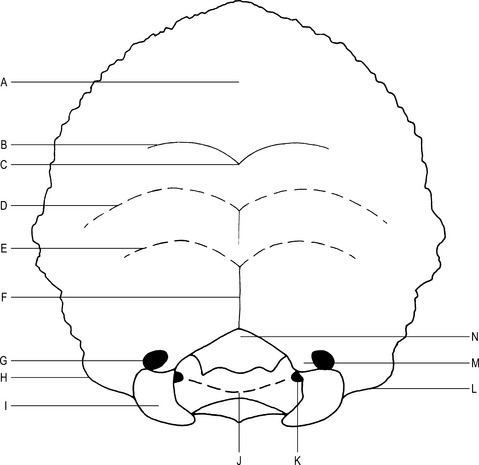10 The skull
Skull
The skull can be divided into 2 sections: the cranium and the face (Figs 10.1, 10.2 and 10.3).
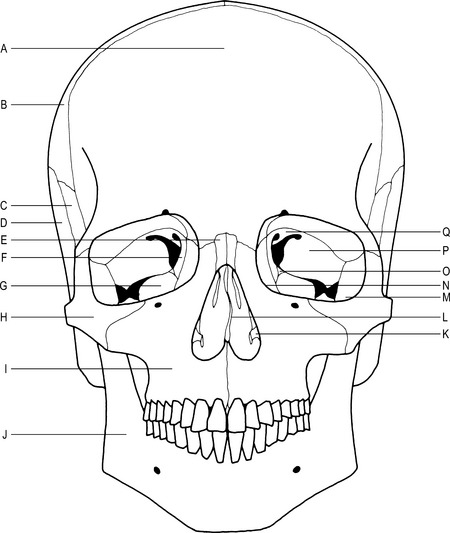
Fig. 10.1 Position of the bones of the skull (anterior aspect).
C–Greater wing of sphenoid bone
P–Greater wing of sphenoid bone

Fig. 10.3 Position of the bones of the skull (cranial cavity).
The floor of the cranial cavity is divided into three distinct sections:
1 – Anterior cranial fossa containing the frontal lobes of the brain.
3 – Posterior cranial fossa containing cerebellum, pons and medulla oblongata.
The cranium is composed of the following bones:
Orbital cavity (Fig. 10.4)
Bones forming the orbital cavity
Nasal cavity (Fig. 10.7)
Forms the upper part of the respiratory tract and is irregular in shape.
Floor
Forms the division between the oral and nasal cavities. Formed by:
Palatine process of the maxilla.
Lateral wall
Irregular as it forms the 3 nasal conchae. Formed by:
Perpendicular plate of the palatine bone.
Paranasal sinuses (Figs 10.8 and 10.9)
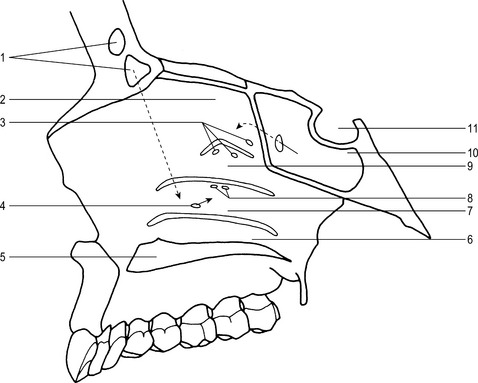
Fig. 10.9 Paranasal sinuses and associated structures (sagittal section).
3 –Opening for the ethmoidal sinuses
4 –Opening for the maxillary sinuses
8 –Opening for ethmoidal sinuses
The sinuses are lined with mucous membrane, which is continuous with that of the nasal cavity.
Ethmoidal sinuses (Fig. 10.8)
Sphenoidal sinuses (Fig. 10.9)
Radiographic appearances of the paranasal sinuses (Figs 10.10 to 10.18
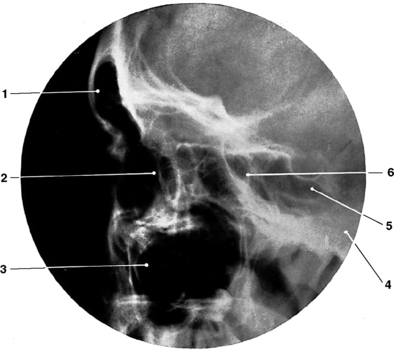
Fig. 10.14 Nasal sinuses: lateral projection.
2 – Anterior margin of ethmoidal sinuses
6 – Posterior margin of ethmoidal sinuses.
(From Bryan 1996.)
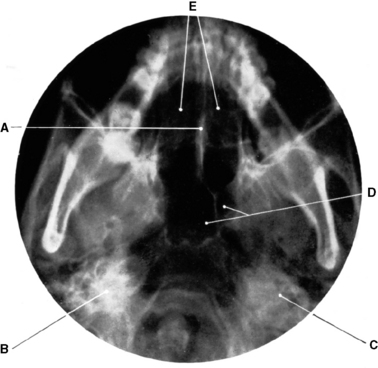
Fig. 10.16 Nasal sinuses: submentovertical projection.
E – Posterior ethmoidal sinuses.
(From Bryan 1996.)
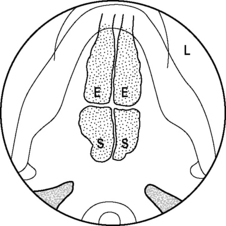
Fig. 10.17 Radiographic projection of the nasal sinuses: submentovertical.
L – Left (Normal radiographic label).
(From Bryan 1996.)
Features of the skull (Figs 10.19 to 10.23)
Radiographic appearances of the skull (Figs 10.24 to 10.30)
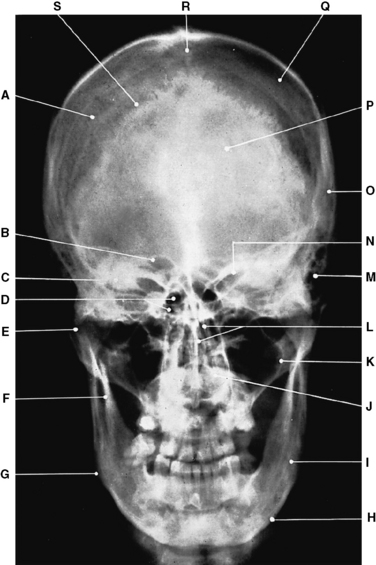
Fig. 10.24 Cranial bones: occipitofrontal projection.
C– Petrous part of temporal bone
L– Ethmoid bone in nasal cavity
O– Squamous part of temporal bone
(From Bryan 1996.)

Fig. 10.26 Cranial bones: lateral projection.
D– External occipital protuberance
F– Petrous part of temporal bones
P– Groove for middle meningeal artery
(From Bryan 1996.)
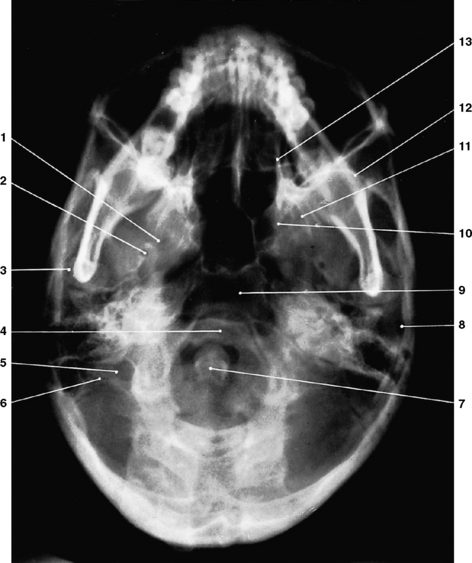
Fig. 10.27 Cranial bones: submentovertical projection.
6 – Transverse process of atlas
12 – Anterior wall of middle cranial fossa
13 – Lateral wall of nasal cavity.
(From Bryan 1996.)
Individual bones of the skull
Occipital bone (Fig. 10.31)
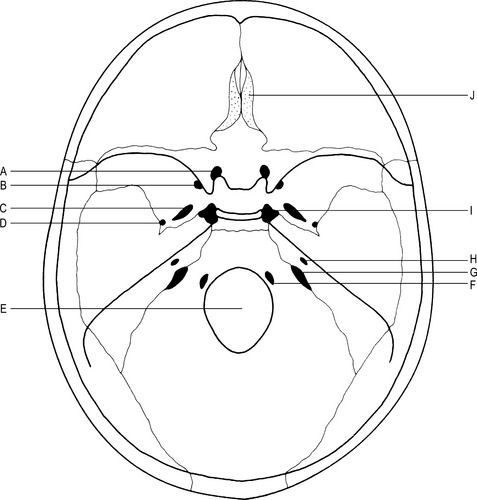
Fig. 10.19 Foramina in the base of the skull (internal aspect).
A – Optic canal, for the optic nerve and the ophthalmic artery.
B – Foramen rotundum, for the maxillary division of the trigeminal nerve.
C – Foramen ovale, for the mandibular division of the trigeminal nerve.
D – Foramen spinosum, for the middle meningeal artery.
H – Internal acoustic (auditory) meatus, for the facial and auditory nerves.
J – Cribriform plate, for the olfactory nerve filaments.
Carotid canal – lies on the external aspect, for the internal carotid artery.
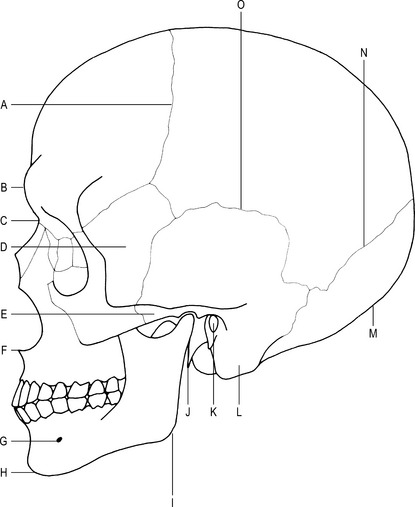
Fig. 10.21 Features of the skull (lateral aspect).
K–External acoustic (auditory) meatus
M–External occipital protuberance
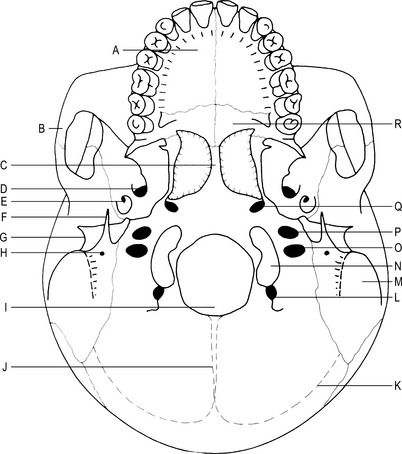
Fig. 10.22 Features of the skull (inferior aspect).
A–Palatine process of the maxilla
G–External acoustic (auditory) meatus
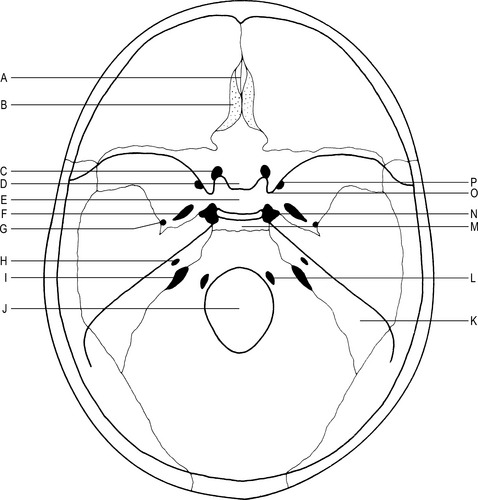
Fig. 10.23 Features of the skull (cranial cavity).
A– Crista galli of the ethmoid bone
B– Cribriform plate of the ethmoid bone
D– Tuberculum sellae of the sphenoid bone
E– Sella turcica (hypophyseal fossa, pituitary fossa) of the sphenoid bone
H– Internal acoustic (auditory) meatus
Stay updated, free articles. Join our Telegram channel

Full access? Get Clinical Tree


